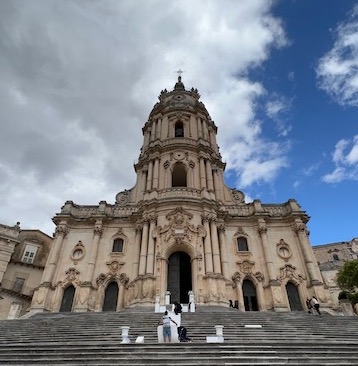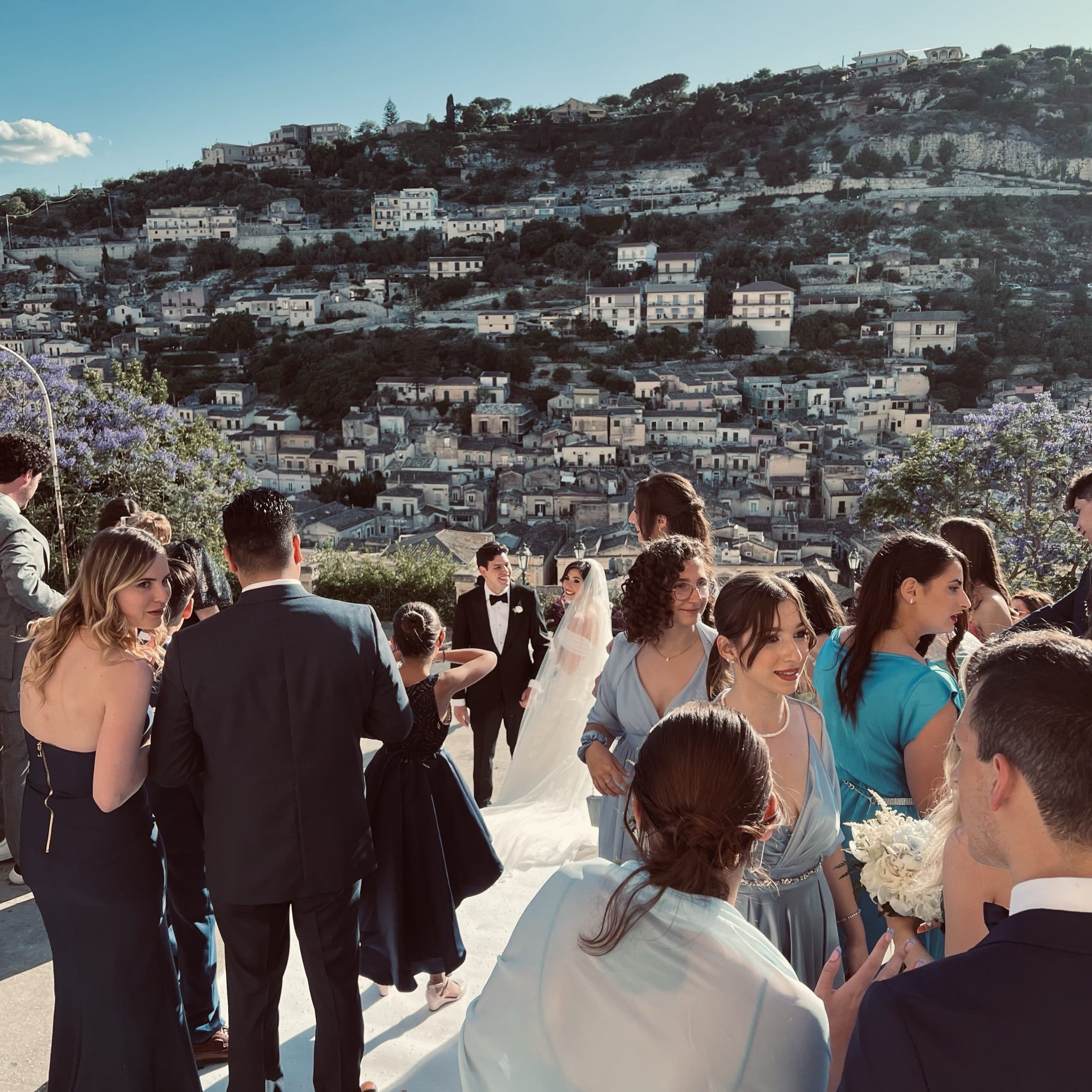Early in 2022 I had the unexpected pleasure of receiving an invitation to a Sicilian wedding in mid-June. I accepted, and, needless to say, it was a marvelous experience. Since this was my first time attending a wedding in Sicily (or Italy for that matter), I was very curious about the state of wedding attire. In particular, my most pressing question was “what should I wear at a Sicilian wedding?” In my case, I ended up wearing something on the more formal side of casual.
Before getting into what I wore, I do have some advice based on my recent experience as a guest and also observing a couple of other weddings in Catania and Noto during my trip to Sicily.

Prior to the wedding, I did some research online and also asked Italians and Sicilians. Let’s start with two basic rules for Italian and Sicilian weddings. Neither of them should be a surprise to anyone. In fact, they are readily applicable to many weddings in the US and Europe.
The first and perhaps most important rule is a statement about what you should avoid. Don’t wear anything that would draw undue attention to you and consequently take the attention away from the bride and groom.

In practice, this means that white is usually reserved for the bride. Bridesmaids generally coordinate and dress in brighter colors. But I also observed female guests wearing dresses in less conventional darker colors such as navy blue or even black.
Since it was a summer wedding, I initially thought of wearing a dark blazer or sports coat with white pants or something even more casual and colorful. However, I realized that wearing white trousers even when paired with a navy blazer could be problematic. So the search was on.
As I thought some more, I also wondered how strict the no-white rule was. Did that extend to wearing a white dress shirt for men? Uncertain of the boundaries, I decided to wear a blue buttondown shirt with a sports jacket.
As it turned out, most of the male guests wore white dress shirts with a handful wearing blue shirts as I did. In reality, “don’t wear white” means avoiding white for your outer top and bottom garment (i.e. jacket or pants). But the shirt, since it is mostly covered by the jacket, is exempt from this rule.




This leads us to the second primary rule of wedding attire for guests. For male guests, dark colors (navy, charcoal grey or black) should prevail, or at least more muted colors. I attended the dinner reception at the lovely Villa Criscione with Lorenzo Sparatore, a tailor from Ragusa. He wore a dark tobacco brown linen suit with a white linen shirt. Of course, it was a great choice for an outfit.
Among the male guests, I observed mostly dark, two piece suits and long neckties though I saw a smattering of bowties among the younger generation.
You should also take note of the attire requested in your invitation as well as the locale. In my case, attire was not specified. But I knew the ceremony would take place in a Catholic church in the late afternoon in the summer (technically it was very late spring but effectively this was a summer wedding in terms of weather). This should also factor into your consideration.
In the end, I wore a two button, single-breasted sports jacket with peak lapels (made by Sartoria Palmisciano). The cloth is a linen/wool/silk lightweight blend (I think by Zegna and sourced from Tip Top Fabrics) in a navy blue and charcoal grey gunclub pattern. Instead of three patch pockets, I have just two on the side and a normal welted pocket on the chest.

This is not a typical sports jacket. I suppose quite a few traditionalists would regard this as an oddly styled jacket. But I like it quite a bit precisely because it is both formal (peak lapels) and casual (patch pockets). For me at least, this offers versatility because it errs on the more formal side of casual. It also explains why I own several jackets in this style.
In this case, I felt the ensemble minimized the risks of being too casual or too formal. If I had erred in being too formal, I would still blend in very easily in a sea of casual sports jackets. On the other hand, if I had erred in being too casual, I would feel quite comfortable in a sea of dark suits. The dark colors and subtle gunclub pattern of the jacket, along with the more formal peak lapels and dark tie, made this possible.
I paired the jacket with charcoal grey wool trousers (made by Palmisciano) held up by a reversible buckle belt by ST Dupont. For my shirt, I wore a medium blue buttondown (Camiceria Medea) in cotton voile, which is the coolest cotton fabric I know of. This was paired with a woven silk tie in solid midnight blue (Sam Hober) and a matching pocket square (made by Medea from the same shirt fabric). For shoes, I wore a pair of dark oak austerity brogues by Vass.
If I had not wanted to take any chances at all, I would have worn a navy blue linen suit (with the same jacket style described above). However, signore Palmisciano was still in the process of making the suit at the time so that option was off the table.


Before the wedding, I was also lucky enough to observe a couple of Sicilian wedding ceremonies that had just finished. These were in Noto and Catania and the wedding attire was entirely consistent with the advice given above.
In closing, I offer the obvious caveat that rules regarding wedding attire are not as universal as they once were, even in Italy. In addition, local variations and individual circumstances have loosened once rigid norms. So this gives you some room for flexibility which should be balanced with the advice given above. But if you’re uncertain on what to wear as a guest, I would err on the more formal side – either going formal (i.e. suit) or the more formal side of casual – as I did.
In any case, if a Sicilian invites you to his or her wedding, consider it an honor and a privilege. I certainly do.
Very helpful. Thank you!